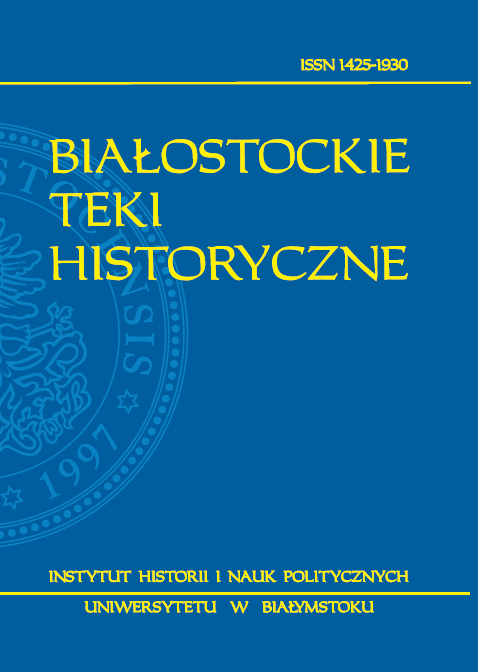Społeczność japońska w Stanach Zjednoczonych w latach 1930–1941. Zarys problemu
Japanese society in the United States (1930–1941). An outline of the problem
Author(s): Mariusz PuchaczSubject(s): History, Social Sciences, Sociology, Social history, Recent History (1900 till today)
Published by: Wydawnictwo Uniwersytetu w Białymstoku
Keywords: Japanese American; race relations in the USA; Territory of Hawaii; West Coast; JACL
Summary/Abstract: The Japanese started coming to the United States at the end of the XIX century. The fact that they were not welcome was reflected in the US state and federal legislation. In the 1920s the Japanese society – embracing two generations – counted fewer than 300,000 people. The first generation, the Issei, were deprived of the right to naturalization. Their children, the Nisei – born in the United States and in the majority of cases Americanized – constituted the second generation. The Japanese lived mainly in Hawaii, as the biggest national minority, and in the West Coast, especially California. In the 1930s life was difficult for the Japanese living in the United States. Apart from the previous problems, they had to cope with new ones – connected with the economic crisis and Japan’s foreign policy. Their widespread and selfless support for Japan’s aggression against China was not only disapproved of by Americans; it also complicated their situation on the eve of the war. On the other hand, it was the time when the Nisei actively joined political life. Their biggest organization, the Japanese American Citizen League (JACL) was quite successful and in the Territory of Hawaii some Japanese became members of the local legislature for the first time.
Journal: Białostockie Teki Historyczne
- Issue Year: 2015
- Issue No: 13
- Page Range: 251-273
- Page Count: 23
- Language: Polish

